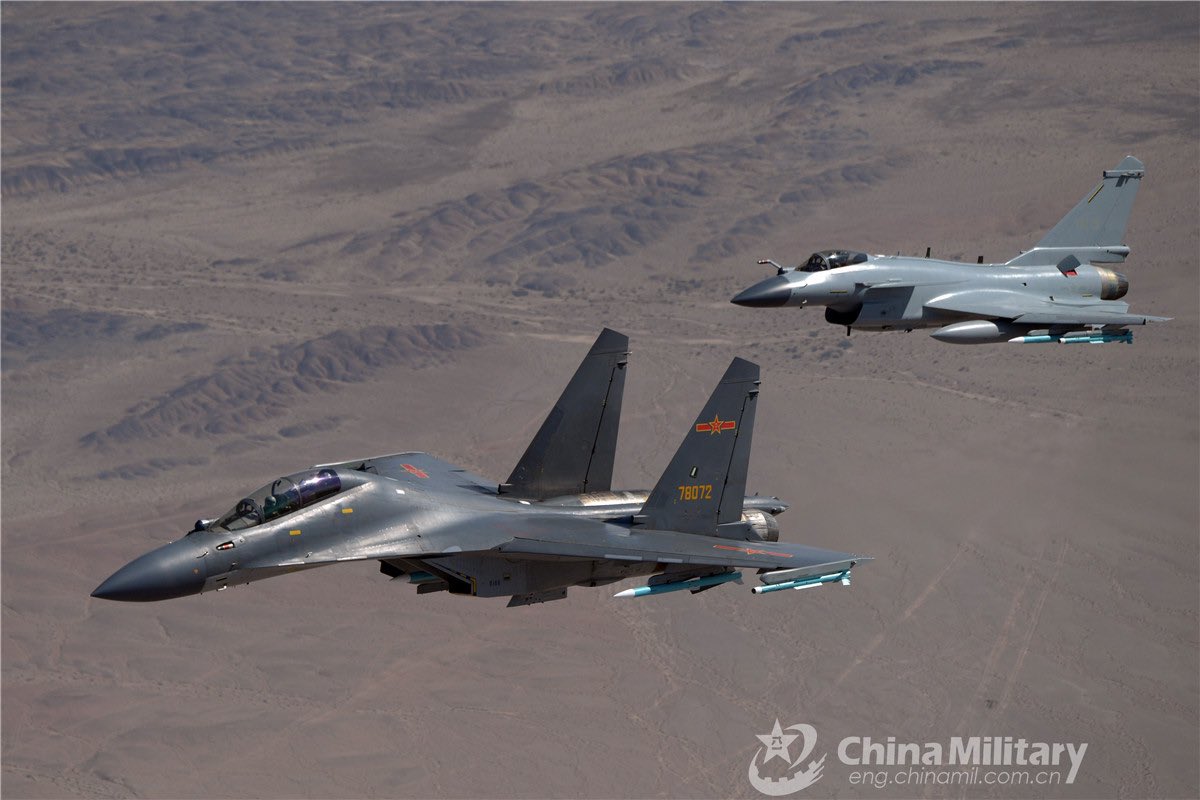Thread: on the significance of Y-20B
Recent images give weight to rumours that Y-20B may be a MRTT (so called Multi Role Tanker Transport) -- that is, all Y-20B airframes may be capable of conversion to a tanker role through wing pods. This could prove rather meaningful. (1/16)


Recent images give weight to rumours that Y-20B may be a MRTT (so called Multi Role Tanker Transport) -- that is, all Y-20B airframes may be capable of conversion to a tanker role through wing pods. This could prove rather meaningful. (1/16)


As of late 2023, the PLA's tanker fleet includes (from oldest to newest): 20+ HY-6s (turbojet engines, old, small), 3 Il-78s (some converted to a transport role), and 8+ YY-20As... so, 20+ obsolete small tankers, with 12+ large-ish tankers that still use old D-30 engines. (2/16)






Relative to the PLA's air fleet size (PLAAF + PLANAF), especially their fighter fleet, the current tanker fleet size very small. Compared to the USAF, the difference is even more stark, even if one accounts for a lack of an expeditionary mission for the PLA. (3/16) 

The YY-20A (all which entered service in last couple of years) is a domestic large tanker aircraft, based off the Y-20A strategic transport. YY-20A can be viewed as a more modern Il-78, and is a major PRC industry and capability milestone. (4/16) 

YY-20A has 2 wingpods for probe/drogue refueling (for fighters) + 1 central drogue station with slightly greater transfer rate (for bigger aircraft like H-6N, KJ-500A). It can operate as a transport by removing its cargo fuel tank. (5/16)




But YY-20A competes with Y-20A transports for production slots, and Y-20 production rate is finite even with growth in factory capacity, and the PLA also requires Y-20 transporters. So YY-20A would remain a "low density" asset: limited in number, vulnerable to attrition. (6/16)
Y-20B - if it is a MRTT - offers a partial remedy. Y-20B replaces old D-30/WS-18 engines on Y-20A with the higher bypass WS-20, improving thrust and fuel efficiency, and is the "intended powerplant" for the aircraft. It is likely to be the new "basic standard" for Y-20. (7/16) 

All Y-20B airframes would have plumbing, wiring built in as standard to enable accommodating 2 wing refueling pods that can be fitted (along with a cargo fuel tank) for a tanker role, and removed for the transport role. Not dissimilar to A400M or KC-390. (8/16)




Given the PLA has a massive need for Y-20 strategic transports as a baseline (150+, 200+ or more) -- if most of those are Y-20B, and if all Y-20B are MRTT capable, then the no. of "potential tanker airframes" is much larger than separating Y-20B to only a transport role. (9/16)
Of course a Y-20B MRTT means an airframe can realistically only fulfill transport OR tanker role at a given time. Thus, role conversion will be mission/task dependent. Training, basing, fitout would need to accommodate this, and some units may prioritize one vs the other. (10/16)
But the benefits of a much larger pool of airframe that can easily be converted to a credible tanker capability is undeniable -- tanker aircraft in the PLA will become less of a "low density" asset, be more resilient to attrition, and more flexible as well. (11/16) 

More importantly, Y-20B as a MRTT doesn't mean a dedicated YY-20B cannot be procured. There have been rumours a dedicated YY-20B may be pursued to introduce a refueling boom on the fuselage -- new for the PLA, but naturally able to offer much greater fuel transfer rates. (12/16)




A hypothetical future Y-20B strategic enabler fleet could see the bulk be Y-20B MRTT (role convertible as transport or tanker per airframe), with an adjacent core fleet of YY-20B dedicated as tankers (non-convertible), even if the latter still uses a fuselage drogue. (13/16)
Of course, in the even longer term, it is likely the PLA would prefer a commercial widebody airframe as a tanker instead (see A330 MRTT, KC-46, KC-10 etc), but currently they do not have a domestic, sanction proof airframe that can be converted for that. (14/16)
Widebody commercial airframes are preferred to a military transport airframe like Y-20 or Il-76 for the tanker role. Military transports have some minor benefits like theoretical ability to operate from more austere runways, but isn't worth the tradeoffs for a tanker. (15/16)
Until then, the Y-20B airframe will be basis of the PLA's mainstay tanker fleet -- and if all Y-20B as standard are built as MRTT capable, then Y-20B may rival the scale and significance that PLA introduction of AEW&C, ARH BVR, or fighter AESAs had in their eras. (16/16) 

• • •
Missing some Tweet in this thread? You can try to
force a refresh















